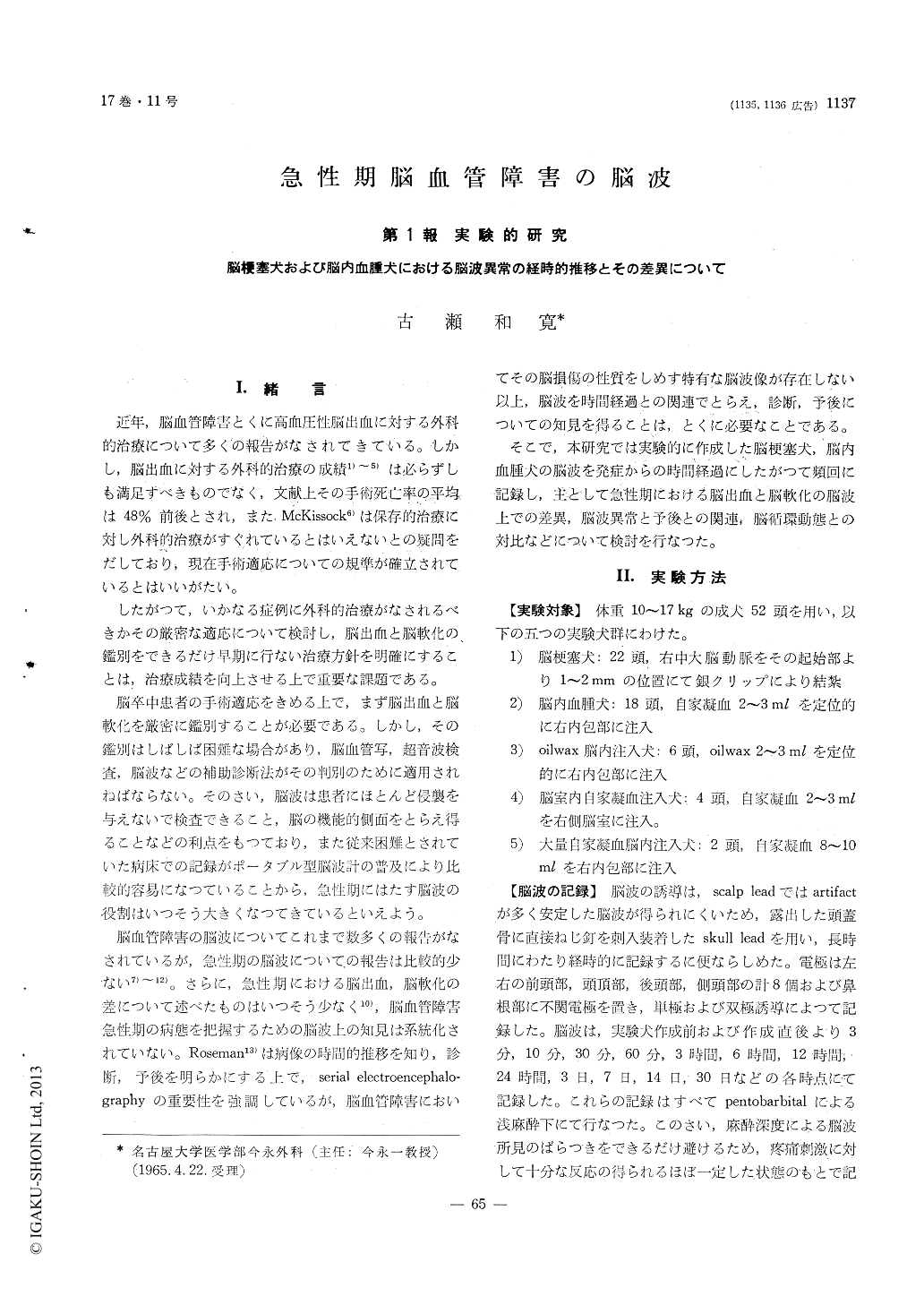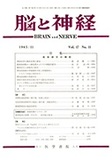Japanese
English
- 有料閲覧
- Abstract 文献概要
- 1ページ目 Look Inside
I.緒言
近年,脳血管障害とくに高血圧性脳出血に対する外科的治療について多ぐめ報告がなされてきている。しかし,脳出血に対する外科的治療の成績1)〜5)は必らずしも満足ずべきものでなく,文献上その手術死亡率の平均は48%前後とされ,またMcKissock6)は保存的治療に対し外科的治療がすぐれているとはいえないとの疑問をだしており,現在手術適応についての規準が確立されているとはいいがたい。
したがつて,いかなる症例に外科的治療がなされるべきかその厳密な適応について検討し,脳出血と脳軟化の鑑別をできるだけ早期に行ない治療方針を明確にすることは,治療成績を向上させる上で重要な課題である。
This report presents serial electroencephalographic findings in dogs with experimentally produced cerebral infarction and intracerebral hematoma.
1) In cerebral infarction, the tendency of gradual restoration was observed in serial EEG with negligible EEG abnormalities in the contralateral hemisphere.
2) In intracerebral hematoma, slow activity revealed a peak between the 3rd and 7th postoperative day with a significant EEG abnormality on the contralateral side. This temporary deterioration in EEG findings may correspond to increased edema in the cerebral tissue around the hematoma.
3) In fatal cases, persistent suppression of the elec-trical activity was observed, showing down-hill course in general. This trend indicates poor prognosis.
Conclusively, the findings which seem to be cha-racteristic to the infarction or the hemorrhage can not be obtained by EEG recorded only one time after the stroke. The time factor is important in the estimation of the EEG abnormality in acute cerebrovascular dis-ease.
Therefore, the follow-up data that differ from each other through the course, as above mentioned, may suggest the possibility of differential diagnosis of the both diseases.

Copyright © 1965, Igaku-Shoin Ltd. All rights reserved.


